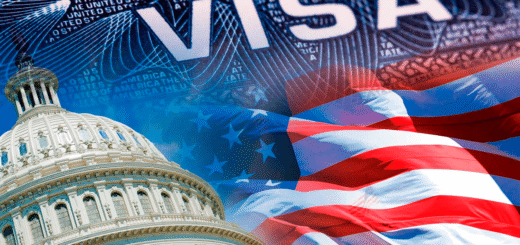US Immigration News: What You Need to Know Now

If you are trying to stay on top of US immigration news, you already know how quickly things are changing. Policies shift, new programs emerge, and regulations can alter the course of your immigration journey almost overnight. Whether your plan is to study in the United States, work in a high-skilled sector, reunite with family, or start a business, understanding the latest developments is essential. In this guide, I will take a deep dive into the most important trends in US immigration policy, recent proposals, and what they mean for people at different stages of their journey.
US Immigration News Update On Asylum Processing Overhaul
One of the most talked-about updates in US immigration policy is the overhaul of asylum processing. For years, applicants have faced long backlogs, inconsistent decisions, and uncertainty that could stretch for months or even years. Now, the government is taking steps to streamline the system.
At ports of entry, dedicated asylum officers are being deployed to improve screening. The goal is to ensure that legitimate claims are quickly identified while reducing the burden on standard immigration channels. Expedited removal procedures are being used more widely to swiftly screen individuals who are inadmissible, preventing unnecessary delays for other applicants.
In addition, new asylum processing centers are being opened across the country to handle cases more efficiently. Central American and Caribbean national applicants, who have historically faced the longest waits, will benefit from targeted efforts to reduce backlogs. Adjudicators are receiving enhanced training to improve consistency in decision-making and reduce the need for appeals. For anyone applying for asylum, these changes are designed to make the process faster, fairer, and less stressful.
Skilled Worker Visa Enhancements in US Immigration Policy
Another major focus in US immigration policy is the push to attract high-skilled talent. The United States has long relied on skilled workers to drive innovation and economic growth, and recent visa enhancements reflect a renewed effort to maintain global competitiveness.
The H1B visa cap has been expanded for holders of advanced degrees from US institutions, creating new opportunities for graduates of American universities. A proposed rule would allow H4 visa holders to extend work authorization independently of the primary H1B status, offering families more flexibility and financial stability. Priority allocation for STEM workers has been adjusted to ensure that industries driving innovation can access the talent they need.
Additionally, the PERM labor certification process is being streamlined to reduce paperwork and shorten waiting times, while pilot programs for fast-track green card processing are now available for professionals in critical industries. For skilled workers, these changes can mean a more predictable, accessible pathway to permanent residency and greater opportunities to contribute to the US economy.
US Immigration Update On Student Visa Reforms
Student visas are another area of significant change in US immigration news. Maintaining the country’s reputation as a leading destination for higher education remains a priority, and reforms aim to improve oversight, reduce abuse, and attract high-quality students.
Optional Practical Training has been extended for STEM graduates to 42 months, giving international students more time to gain hands-on experience after graduation. The I-20 issuance process is moving to a fully digital system to reduce fraud and simplify international admissions. English proficiency guidelines have been updated to ensure that students are prepared for academic success and able to engage fully with their programs.
Colleges, including vocational institutions, now face enhanced oversight and more frequent site visits to ensure compliance with federal requirements. Reporting on internships, funding sources, and student outcomes is becoming mandatory, helping to maintain program integrity and protect both students and employers. These changes are designed to ensure that students who come to the US have a legitimate pathway to education and work experience, benefiting both the individuals and the broader labor market.
Family-Based Reunification Updates in US Immigration
Family immigration continues to be a major topic in US immigration policy. The government is taking steps to make family-based visas more accessible while protecting against financial risk.
Immediate relative and fiancé visa processing has been streamlined, reducing the time it takes for families to reunite. Pending Adjustment of Status applications can now benefit from automatic extensions, preventing disruptions for those waiting for final approvals. AI-enhanced appointment scheduling is helping consular offices manage demand more efficiently, reducing long wait times at embassies and consulates.
Affidavit of support requirements have been revised to ensure sponsors are able to meet financial obligations without undue burden. In some cases, temporary fee relief is being offered to low-income sponsors to encourage family reunification. These measures aim to support US citizens and permanent residents in bringing their close relatives to the country while maintaining responsible fiscal oversight.
Temporary Protected Status Expansion
Temporary Protected Status, or TPS, has been expanded in recent US immigration news to provide stability for individuals from countries affected by conflict or natural disasters.
New TPS designations grant legal presence and work authorization to citizens of these countries, while existing TPS holders can now enjoy extended validity periods, giving them more security in the United States. Work authorization eligibility has also been broadened, helping individuals integrate into the workforce and contribute to the economy.
Some programs now include employment-based support for small businesses run by TPS holders, encouraging entrepreneurship and helping recipients achieve economic self-sufficiency. For many, these updates represent not just legal protection, but a chance to build a stable life in the US while contributing meaningfully to their communities.
Border Security Developments
Border security continues to be a priority in US immigration enforcement. Recent initiatives aim to balance legal entry, safety, and efficiency.
New surveillance technologies, including cameras, drones, and sensors, are being deployed to monitor points of entry. Trusted traveler programs are being expanded to provide smoother, faster access for low-risk travelers. Cooperation with Mexico, Canada, and Caribbean partners is strengthening efforts to manage migration flows and share intelligence.
Comprehensive biometric screening is now being implemented at land, sea, and air ports of entry, and rapid response units have been introduced to handle surges in migration or natural disasters. These measures are designed to secure legal pathways, improve enforcement, and reduce unauthorized crossings while maintaining a focus on efficiency and fairness.
Visa Bulletin and Priority Date Trends
Keeping an eye on the Visa Bulletin remains crucial for anyone following US immigration news. Priority date movement affects employment-based and family-based visa categories, and recent trends show modest advancements in EB-2, EB-3, and FB-2 preference categories.
High-demand countries are now seeing wider priority buckets, making more visas available to applicants from India, China, and other nations. Processing capacity has increased in selected employment streams, and proposals for fee waivers in underserved communities aim to reduce financial barriers. Premium processing options are expanding for entrepreneurs and critical professions, allowing faster consideration for those contributing to key industries. Understanding these trends helps applicants plan filings strategically and maximize the chances of timely approval.
Naturalization Pathways and Civics Updates
Citizenship reform is gaining attention in US immigration policy. Efforts focus on streamlining the naturalization process and increasing access to civics education.
New online study tools and virtual classes make it easier for applicants to prepare for civics testing. Pilot programs like the American Promise initiative allow some spousal green card holders to file early for naturalization. Public awareness campaigns are being launched to inform military family caregivers, religious workers, and other eligible groups about their pathways to citizenship. Mobile filing trials are being introduced for eligibility assessments and status renewals.
These measures are intended to reduce processing burdens, enhance civic understanding, and make the path to citizenship more accessible and transparent.
Removal and Deportation Policy Adjustments
Removal and deportation policies remain a significant focus in US immigration policy. Guidance now prioritizes removal for recent serious criminal convictions while providing exemptions for low-risk undocumented individuals.
Alternative enforcement mechanisms, including supervised release programs, are being introduced to reduce unnecessary detention. Legal access and screening are being improved for vulnerable populations, including unaccompanied minors and asylum seekers. Quarterly public reporting of priority cases is increasing transparency and accountability.
The overall goal is to balance enforcement objectives with fairness, ensuring resources are directed toward high-priority cases while protecting those at low risk.
Economic Support for Immigrant Entrepreneurs
Immigrant entrepreneurship is receiving a boost in recent US immigration roadmap. Several programs have been launched to support business founders and expand economic inclusion.
Pilot grants now provide immigrant entrepreneurs with access to federal business counseling. Small Business Administration microloans have been expanded, with special consideration for immigrant-owned businesses. Community resource networks help new business owners navigate licensing, permits, and contracts. Technical assistance programs assist O and EB-5 visa holders in transitioning to long-term business operations.
These initiatives aim to unlock innovation, create jobs, and ensure that immigrant entrepreneurs can thrive in the US economy.
How US Immigration News Updates Affects You
The sweeping changes in US immigration policies have practical implications for applicants, sponsors, and employers alike. Students should assess eligibility for extended practical training opportunities and ensure compliance with new I-20 and reporting requirements. Family sponsors must prepare updated affidavits and financial documentation. TPS holders should renew work authorizations and explore entrepreneurial supports. Skilled workers and employers should monitor premium processing options and concurrent transfer rules, while auditing compliance procedures and data security practices.
Being proactive is essential in adapting to these policy shifts and avoiding delays or complications in your immigration journey.
Conclusion
The landscape of US immigration policies is dynamic and constantly evolving. Whether your goal is asylum, study, entrepreneurship, or family reunification, staying informed is critical. By understanding new policies, tracking the Visa Bulletin, and planning strategically, you can navigate the system more effectively. Staying updated allows you to make informed decisions and maintain control over your immigration journey in the United States.













